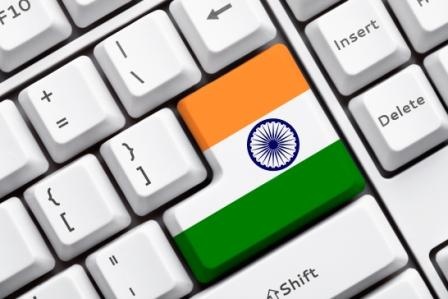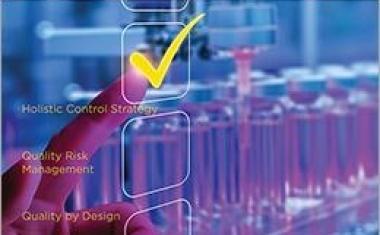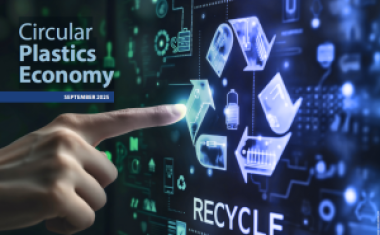Chinese Chemical Industry and Environmental Protection



Getting Serious About Pollution? - According to a report by the World Health Organization, seven of the 10 most polluted cities in the world are in China. Depending on the method used, it is estimated that Chinese gross domestic product growth would be 2% to 3% per year lower if environmental pollution were to be taken into account. However, the development of an urban middle class has boosted the environmental consciousness of an important part of the population substantially in the past few years.
The chemical industry is by far not the only reason for environmental pollution - this would be the burning of coal followed by increasing car traffic and others. Moreover, as in Western countries, the chemical industry often gets a large share of the public attention because of the localized nature of its pollution and the public's unfamiliarity with chemical processes (compared with, for example, the burning of coal). So how does the recent rise of environmental concerns in China affect the chemical industry?
China is not a lawless place at all. In fact, many rules regarding chemicals have long been in place, including occupational exposure limits for hazardous chemicals, regulations on safe management of hazardous chemicals, safety rules for classification, precautionary labeling and precautionary statements of chemicals as well as restrictions and prohibitions for the import and export of specific chemicals.
However, in the wake of the current 12th Five-Year Plan, these rules have become tighter and are enforced more strictly. The plan includes a number of targets relating to environmental issues, with the aim of achieving sustainable industrial development. Implementation of these ambitious goals specifically focuses on the chemical industry (among others). For example, the current Guiding Catalogue for Foreign Investment Industries encourages foreign investors to invest in 60,000 t/a or more non-phosgene polycarbonate (PC), polyoxymethylene (POM), polyamide and other engineering plastics, all of which are seen as materials with environmental benefits (engineering plastics can replace metals in automotives, reducing their weight and consequently their fuel consumptions). At the same time, the catalog restricts other, less beneficial processes, for example, PVC production via the acetylene process.
Lighter Footprints
A clear trend also can be seen in the acceptance of chemical production in or near bigger cities, probably at least partly a consequence of local protests, such as those against production of p-Xylene in Xiamen, Dalian and Kunming. In eastern China, particularly in Shanghai, many industrial parks already reject chemical projects, thus avoiding local protests and moving toward more knowledge-oriented economies with lighter environmental footprints. Some established parks such as Suzhou Industrial Park do not allow chemical projects within their premises. While there are chemical projects in Shanghai, they are increasingly confined to areas such as Shanghai Chemical Industrial Park in Jinshan. But even there, not all chemical projects are welcome any longer - a major specialty chemicals producer that already runs production in Jinshan will have to move to Ningbo as the Shanghai authorities did not give permission to expand production in Jinshan. Even in emerging cities such as Changshu, the mainstream industrial parks will increasingly move any chemical projects to specialized parks further from the city center.
Increasing Regulations
In addition, there is a large body of regulation for individual chemicals and chemical production processes, all of which may affect specific sub-segments of the chemical industry. Examples of changes toward more sustainable practices:
- Demand growth for dimethylformamide (DMF) has slowed down partly because of increased recycling of the chemical as a consequence of environmental regulation. In a second step, downstream industries such as fiber producers are now replacing DMF with an alternative, dimethylacetamide (DMAC), further reducing DMF demand growth.
- Aqueous glyphosate solution with content below 30% was banned by China. As this low-concentration solution was used as an outlet for production waste, the ban resulted in higher environmental protection costs for glyphosate producers. As in many other cases in China, the stricter regulation also led many smaller companies with outdated equipment to quit the market.
- In coatings, the popularity of environmentally friendly varieties such as waterborne coatings is increasing, also leading to an increase in average price per kilogram as the newer materials are more expensive.
- Soda ash production has become more environmentally friendly as several producers using the Solvay process have started using waste residues to desulfurize boiler flue gas.
- Consumption of trichloroethylene for metal cleaning has been reduced because of increasing pressure for environmental protection.
- Coal-to-oil (CTO) projects, while overall probably not particularly environmentally friendly, have at least been restricted by the National Development and Reform Commission (NDRC) to some extent by establishing a minimum capacity of 500,000 t/a, and by fixing a maximum consumption rate of fresh water.
Below these general developments, there are frequently highly specific and technical targets, for example for PVC production (2012 government targets):
- Low-mercury catalyst to be used in 50% of its calcium carbide-process PVC capacity
- Reduction of mercury use by 208 tons per year; recovery of all waste mercury catalyst
- Use of hydrochloric acid deep desorption technology into more than 50% of its PVC capacity
- Reduction of calcium carbide slag discharge by 12.58 million tons
- Reduction of wastewater discharge by 39.9 million tons
- Reduction of COD emissions to 5,770 tons a year, or down by 13,460 tons
Rules Vs. Reality
These are the official rules - but what does reality look like? For multinational companies in China, compliance with chemical legislation is not always straightforward as the regulations are often not very transparent and only available in Chinese. Still, the high level of scrutiny directed at foreign companies and the limited upside of employed managers who break the rules lead to these companies generally being very compliant with regulation.
A bigger problem derives from smaller local, often privately owned companies. These often have substantial influence on local government and thus the enforcement of environmental legislation. Every manager of a Western chemical company has examples of a local competitor not playing by the rules but finding cheaper alternatives, e.g., regarding waste disposal or emission of toxic gases. Local authorities seem to be more tolerant of these violations, probably less because of limited awareness and more because of the perceived tradeoff between employing a considerable workforce and complying with costly regulation in low-margin, low-scale businesses.
Environmental pollution of this type will probably continue for some time, though general trends in the chemical industry toward higher quality and larger production capacities will also gradually reduce these practices. It is a common phenomenon in China to have a time gap between laws being announced and being actively enforced - but once the regulations are there, it is mostly a question of time until all market participants have to follow the rules. In the long run, this will favor both multinational companies and larger domestic companies as they have the knowledge and capital to follow the local regulation.
Overall, it seems justified to be cautiously optimistic about improving environmental protection by the chemical industry in China. Similar to the past development in Western countries, at some point a level of wealth is reached at which the perceived benefits of growth no longer outweigh the costs of environmental pollution. In rich areas of China, such as around Shanghai, this point is being reached.
Company
Managm. Consult. ChemicalsRM1302, 13/F CRE Bldg.
Wanchai, Hong Kong
China
most read

ECA Foundation Aims to Become Largest Pharma Association for GMP/GDP Compliance
The ECA Foundation, one of the most important not-for-profit organizations for regulatory expertise in the pharmaceutical industry, aims to become the largest independent GMP/GDP organization in the world.

ISPE Good Practice Guide: Validation 4.0
The Validation 4.0 Guide provides a comprehensive approach to ensuring product quality and patient safety throughout a pharmaceutical product's lifecycle.

Q1 2025 Chemical Industry: Diverging Trends
The first quarter of 2025 highlights a continued divergence between the European and US chemical industries.

Lead or Lag: Europe’s AI Materials Race
How AI and Robotics are reshaping the race for materials discovery.

Relocation of Chemicals Production Footprint in Full Swing
A new Horváth study based on interviews with CxOs of Europe’s top chemical corporations reveals: The majority of board members expects no or only weak growth for the current year.










